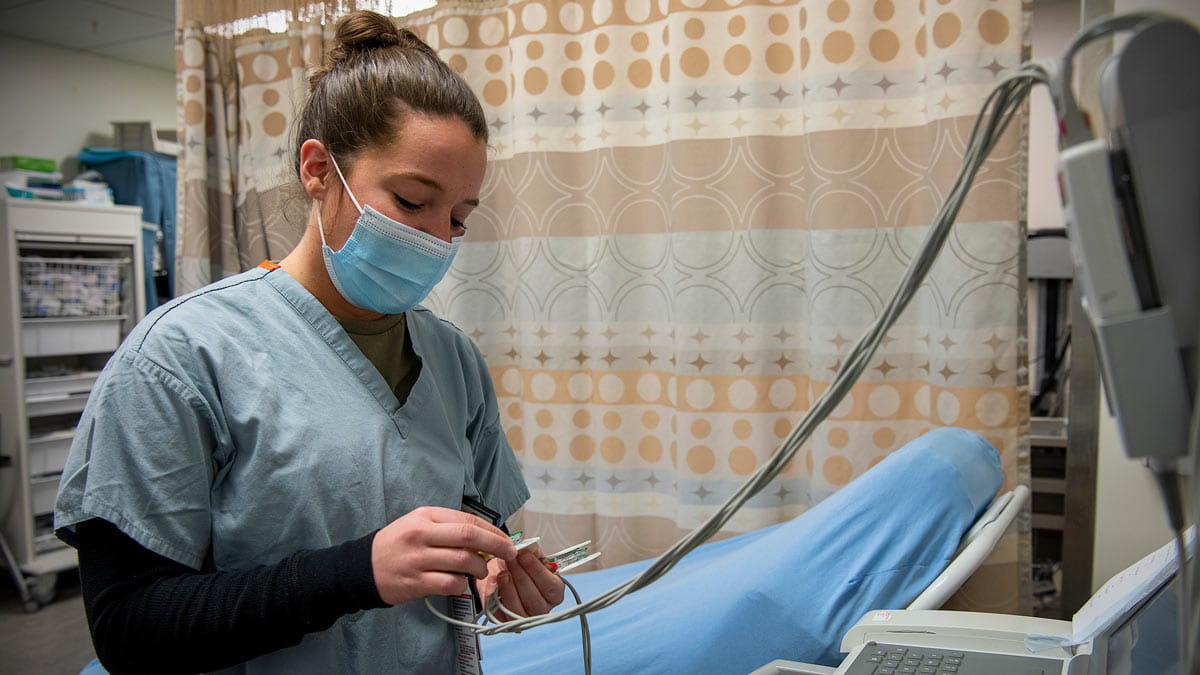What is long COVID-19?

As we learn more about COVID-19, we know that it affects different people in numerous ways. Many survivors have suffered with extended symptoms, called post-COVID syndrome. It’s also commonly called long COVID; patients have termed themselves “long-haulers.” The health care issues surrounding this are a topic of ongoing research.
What is post-COVID syndrome?
Currently, there’s no consensus definition of post-acute COVID-19. However, based on a COVID Symptom Study conducted in more than 4 million people in the United States, United Kingdom and Sweden who entered their symptoms in an app after the diagnosis of COVID-19, post-acute COVID-19 is defined as the presence of symptoms extending beyond 3-4 weeks from the initial onset of symptoms. Chronic COVID-19 is defined as symptoms extending beyond 12 weeks from initial onset.
Long COVID’s precise definition is elusive, as causes and effects are being investigated. It may reflect organ damage from the infection, ongoing viral activity or an inadequate antibody response, according to an October 2020 opinion article in the Journal of the American Medical Association. Factors that may complicate the picture include physical deconditioning or longer disease courses, other illnesses and psychological problems after contracting COVID-19 or lifestyle changes due to the pandemic. It’s likely that the persistent effects of COVID-19 represent multiple organ systems.
Persistent symptoms are being reported among COVID 19 survivors, regardless of the severity of their initial illness. Symptoms can persist in those with mild disease and few symptoms to those with serious COVID illness requiring hospitalization.
Estimates of long COVID vary; 10-30% of patients may have long-term symptoms and many are age 20-40 based on New York City data. If this bears out over time, this could have profound effects on livelihoods, health care and the economy.
In an observational group from 38 hospitals in Michigan, 1,250 discharged patients underwent a telephone survey. Among the 488 patients who completed the survey, 33% reported persistent symptoms; and this included 19% with new or worsening symptoms. Shortness of breath while walking up stairs in 23% was most common; cough in 15% and persistent loss of taste and/or smell in 13%. In an Italian study, persistent symptoms were present in 87% of patients discharged from hospitals, with fatigue being most common in 53%; shortness of breath in 43%. A French study reported that about a third of patients felt worse than prior to COVID-19.
What are the symptoms?
The most commonly reported symptoms include fatigue, shortness of breath, cough, joint pain and chest pain. Other long-term symptoms include brain fog, depression, muscle aches, headaches, intermittent fever and heart palpitations. With long COVID, it’s theorized that there’s dysregulation within the body to get the blood to the brain. This may lead to fatigue, headaches, digestive issues, heart palpitations and difficulty breathing. Exercise tolerance is a challenge with such symptoms; patients may present with postural orthostatic tachycardia syndrome (POTS), a poorly understood nervous system disorder that’s appearing in some long COVID patients. It’s really not yet clear how it’s caused.
The more serious, but less common, symptoms affect different organs in the body. This includes: inflammation of the heart muscle, lung function and kidney abnormalities, skin rashes, hair loss and neurologic issues, such as smell and taste problems, insomnia and memory issues. There may also be psychiatric issues of depression, anxiety and mood swings. It seems as though there are manifestations of almost any organ in the body with almost any symptoms. As physicians, we learned that diseases like syphilis and tuberculosis give you many symptoms; now, we should likely add COVID-19 to that list.
Where do we go from here?
The identification of the SARS CoV-2 virus in December 2019 has led to continually evolving knowledge about COVID-19 disease. The natural history and the effects are current areas of investigation. Survivor support groups are connecting individuals with long COVID by sharing resources.
Understanding the natural history of SARS CoV2 infection can inform care strategies and the public health response. All clinicians, need to be supportive of patients, either in video or via in-person visits and agree to “understand their suffering". The prevalence, duration and severity of persistent symptoms after COVID 19 and risk factors associated with these symptoms are being studied at the National Institutes of Health (NIH). At The Ohio State University Wexner Medical Center, we just held a conference, “COVID-19 for the Long Haul,” that was attended by about 1,200 clinicians from across the country. We’ve also developed a multi-disciplinary health care team to address the long-term effects of COVID-19.
Because COVID-19 is a new disease, much about its course remains uncertain. We do know the most severe COVID disease is associated with other underlying health conditions, such as diabetes. Prevention of COVID 19 remains important for every American as it’s the key to avoiding long COVID. It’s also crucial to do everything possible to improve your own current health too.
- If you have diabetes, take your medications and avoid sweets that may be the downfall to optimal glucose management.
- If you have hypertension, take your medications and avoid salty foods, canned foods and chips that just fight your blood pressure medications.
- If you weigh more than you should, are overweight (with a body mass index or BMI of 25 or higher), obese (BMI of 30 or higher) or severely obese (BMI of 40 or higher), do what you can to increase your activity. Try to eat at least two fruits and three vegetables per day, drink water and avoid processed foods. The average American has gained 1-1.5 pounds per month over this last year, so we should do what we can to reverse this trend.
- Walk outside if you’re able. Fresh air is safe and you’ll move your joints and muscles. Take deep breaths and you’ll return with improved vitality and mentality. You’ll be able to walk farther and faster over time and feel better about yourself.
We’ve lived with COVID-19 for more than a year and continue to understand more every day. However, prevention remains the primary goal.
Julie Mangino is an infectious disease specialist at The Ohio State University Wexner Medical Center.




